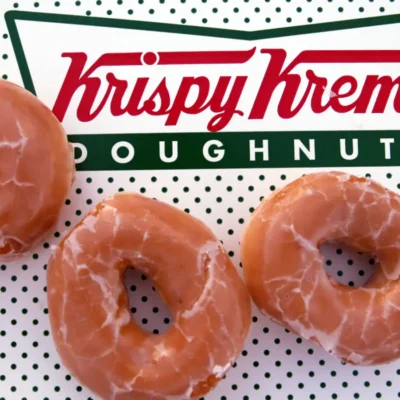Restaurant Brands earnings have taken a hit this quarter, sparking concerns among investors and industry watchers. Despite steady sales and aggressive growth strategies, the fast-food giant behind iconic chains like Burger King, Tim Hortons, Popeyes, and Firehouse Subs is facing shrinking profit margins due to rising operating costs.
This article takes a closer look at why Restaurant Brands earnings have dropped, what’s causing the increase in expenses, how each brand is performing, and what lies ahead for the company.
Understanding Restaurant Brands: A Quick Overview
Restaurant Brands International Inc. (RBI) is one of the largest quick-service restaurant (QSR) companies in the world. It owns and operates several well-known global chains:
- Burger King
- Tim Hortons
- Popeyes Louisiana Kitchen
- Firehouse Subs
With thousands of outlets in over 100 countries, RBI has positioned itself as a major player in the global food industry. But even for a giant like RBI, today’s economic conditions are proving to be tough.
Restaurant Brands Earnings: What the Numbers Say
In the latest quarterly earnings report, Restaurant Brands announced:
- Revenue growth of around 5–8% (varies by region and brand)
- Net income decline of approximately 8–12% year-over-year
- Operating expenses increased by 10–15%
Despite growing global sales, especially through digital channels and new store openings, the rising costs are eating into the profits.
Key Reasons Behind the Earnings Drop
- Inflation and Supply Chain Challenges
The most significant factor affecting Restaurant Brands earnings is inflation. The cost of food ingredients, packaging, transportation, and labor has gone up sharply across all markets.
- Food prices remain volatile due to global supply chain disruptions.
- Freight and logistics costs have surged post-pandemic.
- Labor shortages have led to higher wages, especially in North America.
- Higher Input Costs
Key ingredients like beef, chicken, dairy, and coffee have become more expensive. For example:
- Burger King has seen rising beef prices.
- Tim Hortons faces higher coffee bean and dairy prices.
- Popeyes has been impacted by increased poultry costs.
These input cost increases directly reduce margins, especially when price hikes are limited by consumer tolerance.
- Marketing and Tech Investments
RBI has continued to invest heavily in:
- Digital ordering platforms
- Mobile apps and loyalty programs
- Global marketing campaigns
While these are long-term growth drivers, they require upfront capital, affecting short-term earnings.
- Store Renovations and Expansion Costs
The company is renovating existing stores to provide a better experience and attract more foot traffic. At the same time, they’re opening new locations across Asia, the Middle East, and Latin America.
This aggressive expansion strategy adds to current expenditures, delaying returns on investment.
Brand-by-Brand Performance Breakdown
Burger King
- Remains the strongest performer in terms of revenue.
- U.S. market is recovering steadily, but growth is faster in international markets.
- Earnings affected by marketing expenses and operational upgrades.
Tim Hortons
- Strong rebound in Canada, especially in breakfast and coffee categories.
- Digital sales through the app and delivery are helping.
- Higher dairy and coffee costs are pressuring margins.
Popeyes Louisiana Kitchen
- Rapid international growth, particularly in India and the Philippines.
- Domestic U.S. performance is steady but not explosive.
- Chicken supply and pricing remain a concern.
Firehouse Subs
- Still in a growth phase after acquisition.
- U.S. footprint expanding.
- Faces challenges in brand recognition and increased operational costs.
Global Market Trends Affecting Restaurant Brands Earnings
- Changing Consumer Behavior
- More customers are ordering online or via apps.
- There’s a growing demand for healthier and sustainable food options.
- Value-for-money is now a top priority due to inflation.
- Franchisee Struggles
Most RBI restaurants are franchise-owned. Many franchisees are dealing with:
- Higher rent and utility bills
- Struggles to hire and retain staff
- Pressure from customers to keep prices low
This impacts the performance of individual outlets and, by extension, Restaurant Brands earnings as a whole.
- Currency Fluctuations
As RBI operates in multiple countries, exchange rate volatility is another challenge. A strong U.S. dollar can reduce international revenue when converted back to RBI’s reporting currency.
How Is Restaurant Brands Responding?
Despite the dip in earnings, RBI has laid out several strategies to tackle the challenges:
Operational Efficiency
The company is working on reducing energy consumption, simplifying menus, and cutting waste to improve efficiency.
Price Optimization
They are adjusting pricing models carefully—balancing affordability for customers with profitability.
Technology Investments
Enhancing digital platforms and AI-based forecasting tools for supply and demand is a key focus. This helps manage inventory better and reduce waste.
Franchise Support Programs
Restaurant Brands is offering financial assistance and marketing support to franchisees struggling with increased costs.
Investor Reaction to Restaurant Brands Earnings
Following the earnings announcement:
- RBI stock saw a modest drop of around 3–5%
- Analysts have issued mixed ratings, with some maintaining “Buy” due to long-term growth potential
- Others are cautious about short-term profitability pressures
Long-Term Outlook: Cautiously Optimistic
Despite the current dip in earnings, many analysts remain optimistic about the long-term future of Restaurant Brands. Reasons include:
- A strong portfolio of globally recognized brands
- Continued investment in tech and innovation
- Room for expansion in developing markets
However, much depends on how quickly input costs stabilize and whether the company can pass on price increases without losing customers.
What This Means for the Fast-Food Industry
Restaurant Brands’ earnings drop is not an isolated incident. It reflects a broader trend across the fast-food sector:
- Companies are growing in sales but losing in margins
- Rising costs are squeezing profits, even for industry leaders
- There’s a shift toward tech and automation to manage expenses in the long run
Final Thoughts: The Road Ahead for Restaurant Brands
The dip in Restaurant Brands earnings serves as a wake-up call. While the company remains financially healthy and globally competitive, rising costs are a serious concern.
To stay ahead, RBI must balance innovation and expansion with cost control. As economic uncertainties continue, both franchisees and customers will be watching closely.
For now, the company seems determined to weather the storm. But like many in the industry, it faces a tightrope walk between growth and profitability.
Do Follow USA Glory On Instagram
Read Next – Krispy Kreme Loss Widens Amid Impairments and Sales Drop






